Florida Currents





















August 2024 • Volume 13, No. 10
CEO Michael Shepard
VICE PRESIDENT OF CONTENT Leon Espinoza
EDITORIAL DIRECTOR Mike Teegarden, CCC
DEPUTY EDITORIAL DIRECTOR
Noble Sprayberry
SENIOR EDITOR Jennifer Paton, CCC
FLORIDA CURRENTS EDITORS
Chasity Anderson, CCC; Valeri Pearon
ASSISTANT EDITORS Victoria Hampton, CCC;
David Herder, CCC
ASSOCIATE EDITOR
Nina Todea
PUBLICATIONS PRODUCTION
SENIOR MANAGER
Elizabeth Beatty
PUBLICATIONS COORDINATOR
Alyssa McDougle
Members acknowledge that $4.31 a year, plus postage, is the cost to publish 12 issues a year of FLORIDA CURRENTS ISSN 23276304 (USPS 8300). Published by Pioneer Utility Resources Inc., 5625 NE Elam Young Pkwy. Ste. 100, Hillsboro, OR 97124—a not-for-profit Oregon cooperative corporation—the magazine serves the communication needs of consumerowned electric utilities in Florida. Preferred Periodicals postage paid at Hillsboro, OR 97123 and at additional mailing offices.
Postmaster: Send address changes to 5625 NE Elam Young Pkwy., Ste. 100, Hillsboro, OR 97124-6422.
HOW TO CONTACT FLORIDA CURRENTS
Subscription services:
Nonmember subscriptions $15 U.S. a year; $25 foreign a year. Prepayment required. Allow 4-8 weeks for first issue. Identify local edition desired. Have a problem receiving your magazine? Utility members should contact their utility office. Nonmembers call 503-357-2105 or email mailingdept@pioneer.coop.
Back issues:
Back issues and extra copies are $3 each, prepayment required. Supply is limited. Identify edition, month and year. Call first to check availability. Contact Pioneer Utility Resources: P.O. Box 1306, North Plains, OR 97133-1306; 503-357-2105; email: mailingdept@pioneer.coop.
DISPLAY ADVERTISING INQUIRIES
American MainStreet Publications 611 S. Congress Ave. Ste. 504 Austin, TX 78704-1714; 800-626-1181 or 512-441-5200; amp.coop.
© 2024 Pioneer Utility Resources. All rights reserved. Reproduction in whole or in part without written permission is prohibited. Direct reprint requests to editor@floridacurrents.com or for more information, visit www.pioneer.coop.
A POWER OUTAGE OCCURS, make sure Florida Keys Electric Cooperative has all your current phone numbers on file and consider registering for Outage Texting. By doing so, you can expedite outage restoration time should an issue arise.
Are your phone numbers up to date?
Make sure FKEC has the phone numbers you are most likely to call from to report an outage. Visit www.FKEC.com/access-your-account or call 305-852-2431 to check and update the phone numbers associated with your account.
When you call FKEC to report an outage, the co-op’s computer system automatically matches the phone number you are calling from with your service address. It then references FKEC’s database to determine which equipment all current reported outages have in common. This helps determine the likely cause and location of the issue and expedites restoration.
Using the automated phone system is the
fastest and most accurate way to report a power outage.
Are you registered for Outage Texting?
When your cellphone (or any mobile device equipped to text) is registered for FKEC Outage Texting, you can report a power outage by sending “OUTAGE” to 45183. The system enables FKEC to send you a text recognizing your outage and confirming restoration before you even have to report the problem.
To register, text “REGISTER” to 45183 or call FKEC at 305-852-2431 during normal business hours. It may take up to 24 hours for the phone number to be updated/recognized. n
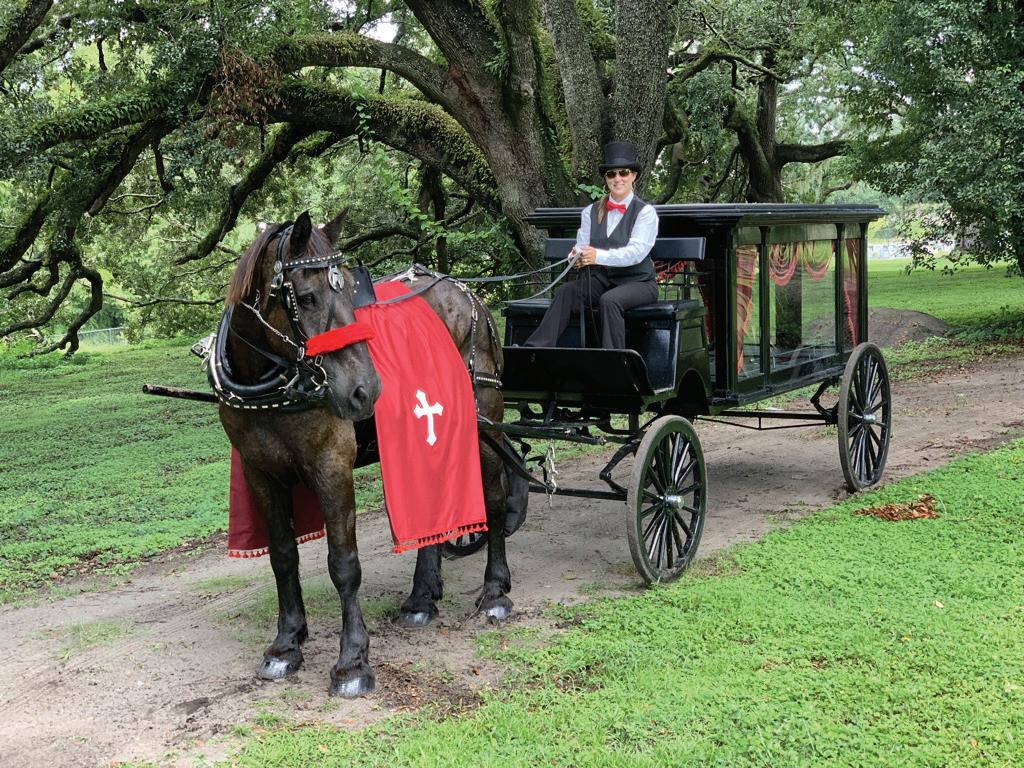

Member Owned Since 1940
Karl Wagner
District 4, Marathon, President
Michael H. Puto
District 4, Marathon, Vice President
Cale Smith
District 3, Islamorada, Treasurer
Gretchen Holland
District 1, Key Largo, Secretary
James J. Boilini
District 1, Key Largo
David C. Ritz
District 1, Key Largo
Craig Belcher
District 2, Tavernier
Joseph H. Roth III
District 2, Tavernier
George D. Hertel
District 3, Islamorada
CONTACT US:
305-852-2431 800-858-8845
Pay by Phone 1-855-940-4077 www.FKEC.com
Mailing Address:
P.O. Box 377, Tavernier, FL 33070
MEMBERS SHOULD KNOW:
FKEC offers Whole-Home Surge protection to safeguard your home or business’s electrical system, appliances and electronics. Learn more at www. FKEC.com/services/surge-protection/
At Florida Keys Electric Cooperative, we are dedicated to embracing technology and addressing our members’ evolving interests. Our commitment to innovation ensures that we can provide the best possible service and support to our Upper and Middle Keys communities.
Like many of our member-consumers, FKEC is incorporating more electric (EV) and hybrid vehicles into our fleet. We started integrating hybrid cars and trucks into our operations 19 years ago. Today, we use three electric cars and two hybrid utility vehicles. To further decrease our carbon footprint and lessen our fleet’s emissions, our bucket trucks run on a biodiesel fuel mix and use long-lasting synthetic oil. We also recycle material like tires.
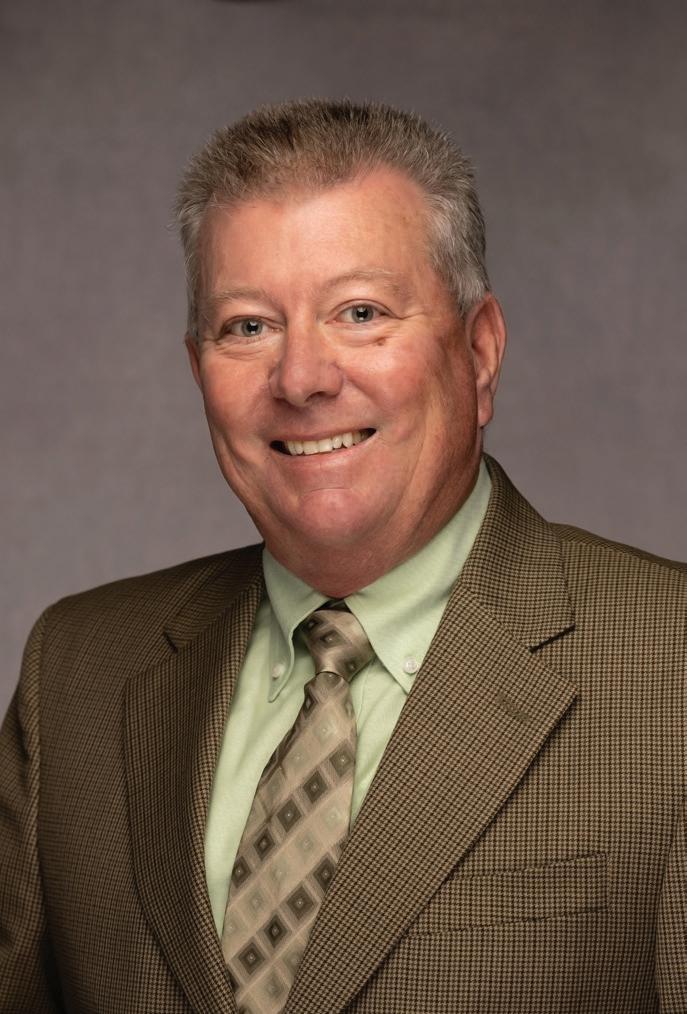

SCOTT NEWBERRY Chief Executive Officer
Unless otherwise noted, “FKEC NEWS” writing, design & photography by: Nikki Dunn Cullen, news@fkec.com.
In addition to being dedicated to efficiency and environmental responsibility, we also want to address our members’ questions or concerns about EVs, and by using them ourselves, we can speak on the topic firsthand. We strive to stay up-to-date with the latest EV technology and support our members who are exploring electric and hybrid vehicles by offering a rebate for qualifying chargers installed at a member’s home. You can read more about our EV rebate, as well as all the residential rebates we offer, on page 6. The facing page also has great information about what to consider if you plan to purchase an EV.
It is important you, our valued
members, also know we are looking ahead at how the increase in electric vehicle charging within our service territory will impact our power system, and we are preparing accordingly. Our board of directors, staff, and the entire team are dedicated to planning for FKEC’s success not just in a year or five years but for decades to come.
At Florida Keys Electric Cooperative, we are committed to providing reliable, efficient, and forward-thinking energy solutions. By incorporating EV and hybrid vehicles into our fleet and supporting our members’ interests in electric cars, we are proud to always take steps towards a future that embraces technological advancements and meets the needs of our community.
If you’re thinking about purchasing an electric vehicle, start by making sure your home or business is prepared for the charging station.





























By tracking hourly energy consumption over a 24-hour period, this member’s data showed a spike at 3:00 p.m. that correlated with turning on a window AC unit in her spare bedroom. Now she can be more mindful of when and if she wants to use the secondary AC.




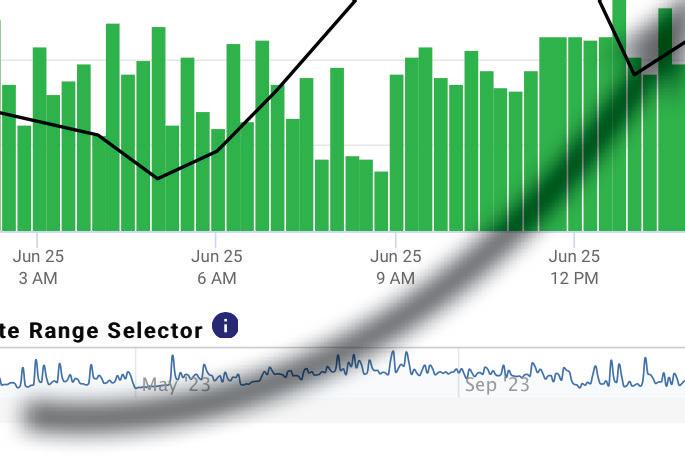








Use energy more wisely by monitoring your electricity data
As summer temperatures increase, so does the amount of power we use to stay cool. However, you can offset your summer cooling costs by tracking your electricity consumption to find ways to use power more wisely.
By registering for SmartHub, you can track energy use daily, weekly, and monthly, allowing you to view and understand usage trends. The data can even be broken down into 15-minute increments, which helps you identify spikes in use, for example, when the AC is running or the pool pump kicks on. On a broader scale, you can see how your energy use is impacted when you have company in town or kids home from school.
Understanding your power consumption helps explain increases and decreases in your electric bills. By staying informed about your energy use patterns, you can make adjustments to reduce use and save money.
To easily monitor your home or business’s power use, log in to your online FKEC
SmartHub account. By visiting the “My Usage” section of SmartHub, you can analyze and understand usage trends to find ways to decrease your energy use. Consider creating a monthly budget and set usage comparisons. You can also set a point or range in time to compare differences in use and costs to help you further understand how you consume electricity.
Visit www.FKEC.com/resources/energyefficiency/ for easy, no-cost or low-cost ways to save energy and offset summer cooling costs. Once you implement new energy efficiency practices, login to SmartHub to track your impact.
SmartHub is available online and via the mobile app. If you don’t already have an account, visit FKEC. com and go to login or scan the QR code.



Other
InadditiontousingFKECSmartHubto viewandtrackyourenergyusage,you canalsosecurelymakeapayment,get alertsassoonasyourbillisready, accessFKEC’sliveoutagemapandmuch more.Pleaseconsidersigninguptoday!
Earn up to $500 in FKEC Residential Rebates by completing qualifying energy improvements.
Florida Keys Electric Cooperative members interested in conserving energy and saving money at home should consider making energy-efficient improvements that also qualify for an FKEC Residential Rebate. By participating, members invest in decreasing their energy consumption to benefit the environment.
Since implementing the Residential Rebate Program in 2014, FKEC has continually evaluated and revised the offer to align with our members’ interests and needs.
To benefit as many members as possible, the co-op offers a wide range of qualified rebates, from significant energysaving improvements like investing in a new air conditioner to minor yet impactful improvements like reflective roof coating. Rebates range from $25 to $500, with a $500 limit per member per calendar year.
To be eligible, you must meet the program’s criteria and apply for the rebate within 60 days of completion of the energy-saving improvement in the same calendar year.
However, our Electric Vehicle Charger Rebate does differ because it allows members who installed a UL-certified Level 2 charger at their home on or after July 1, 2019, to apply.
To apply for an FKEC Residential Rebate, start by reviewing the criteria for the energy-saving improvements at www.FKEC.com or call Member Service at 305-852-2431.
Mini Split A/C Rebate (30% up to $400.00 – SEER 18 or more)
up to $100.00)
A/C
(30% up to $100.00 –EER2 11.00 or more)
Central A/C Rebate (30% up to $500.00 –SEER2 15.3 or more)
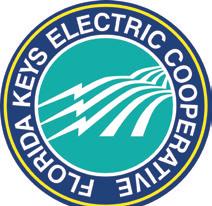






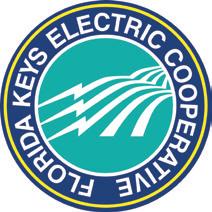


The FKEC Charitable Trust Board recently appointed Tony Macaluso to the honorary position of Director Emeritus in deep appreciation of his exemplary service to the Trust. Tony joined the charitable volunteer board in June of 1998, representing District 1 until recent health issues caused him to step aside this year. However, he proudly accepts the advisory position bestowed upon him by the Trust.
“Tony has our deepest gratitude and heartfelt appreciation for his decades of hard work on the FKEC Charitable Trust Board,” said Richard Overfield, Chairman of the FKEC Members Charitable Trust. “Tony’s commitment to listening to the community’s needs and working to address those needs has made him an invaluable member of this charity. More importantly, he has made a great difference in our Upper and Middle Keys communities.”
Tony’s passion for music, fishing, and real estate first led him to vacation in South Florida from New Jersey with his wife, Nancy, eventually prompting them to call the Keys home. After earning his Florida real estate license in 1979, Tony and Nancy opened their own real estate office in Palm Beach Gardens but spent their free time fishing in the Keys.
While working as a real estate educator and speaker throughout the state, Tony was invited by local agents to teach real estate classes in the Keys. Loving the area, Tony and Nancy worked to make Key
Largo their home. Tony continued as a sought-after real estate instructor locally and quickly became involved in community work. He was Santa for the Free Press Newspaper holiday event, a Key Largo Chamber of Commerce member, and a dedicated FKEC Charitable Trust Board volunteer. Tony also took on the extra duties of Secretary of the Trust for the last 22 years.
While the diligent work of the Trust directors who thoroughly review requests for funds deserves applause and appreciation, Tony reminds us that the co-op member-consumers — who donate by rounding up their electric bill — deserve the praise. “As directors, we can only do good work for Upper and Middle Keys families thanks to the FKEC members who contribute consistently through Operation Round-Up®. We could not do our good work without their generous contributions ranging from 1 cent to 99 cents each month.”
As illustrated throughout his career, Tony has always been interested in making a difference. Before calling the Keys home and contributing to our local community, he joined USAID and the National Association of Realtors Finance Assistance program to teach real estate in other countries to introduce concepts and help build communities abroad.
“When the offer came to work overseas, Tony told me it was his childhood dream to help families in other countries. Well, what loving wife could
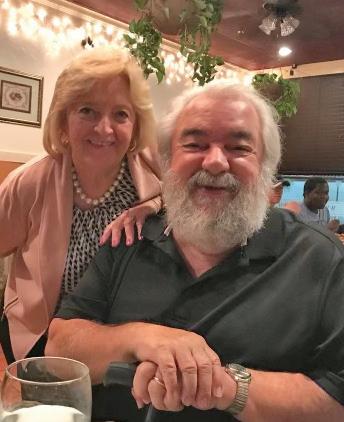
argue with a dream that a young boy put out to the universe when he was 10 years old?” explained Nancy, Tony’s wife and biggest supporter.
While building their careers, Tony and Nancy also raised two beautiful children, son Jim and daughter Brandy, who have extended the family with children of their own.
Tony’s advocacy and communitymindedness have continued throughout his career and into his retirement. His legacy of service and dedication to the community stands as an inspiration. The FKEC Charitable Trust Board is honored to celebrate Tony Macaluso’s enduring contributions and his new role as Director Emeritus.



A Stiltz Homelift is a safe, attractive, & affordable alternative to stairlifts. It requires no special machine room, and no supporting walls.
Economical & Flexible
A Stiltz Homelift can t just about anywhere in your house. It has a compact footprint, similar in size to a small armchair. A Stiltz Homelift plugs into a standard home electrical outlet, using less power than boiling a kettle.
Your Forever Home
Avoid the expense and distress of relocating, or the disruption of adapting your home for downstairs living. A Stiltz Homelift helps you live safely and independently in the home you love.
Some Stiltz customers need a Homelift immediately. But others want to “future-proof” their homes for when the stairs become a challenge.
Homelift
Stiltz is a world leading Homelift manufacturer, so you’ll be in good hands. Your elevator will be installed and maintained by Stiltz trained professionals - who truly care about your freedom.
“I can’t imagine what we’d do without it. I wish we had installed our Stiltz Homelift several years ago!”
– Mr. James, Roanoke VA








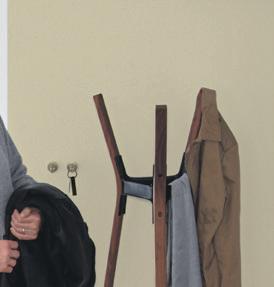
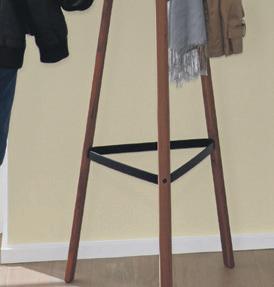












Sweet Southern Horse & Carriage adds a special touch to any occasion
By Pameta A. Keene
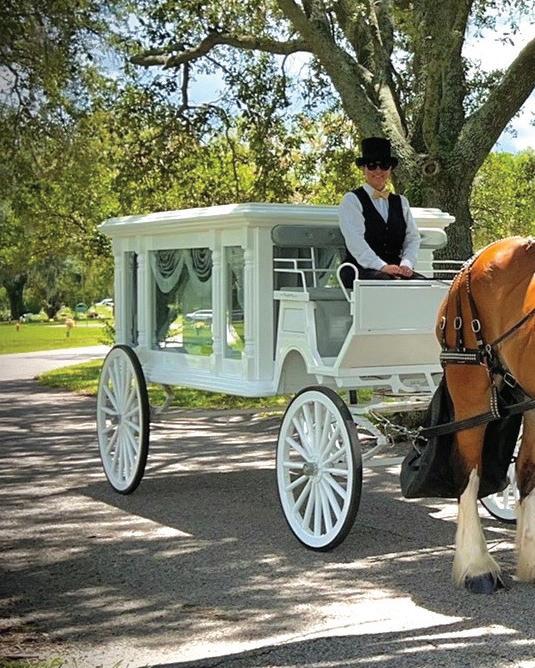

Have you ever given a horse a bubble bath? As owner of Sweet Southern Horse & Carriage, it’s a regular occurrence for Arcadia’s Tiffany Murphy.
“These aren’t just any horses,” she says. “They’re white draft horses, and they pull our carriages to transport brides and grooms to weddings or to deliver dignitaries to special events.
“These Percherons and Clydesdales are very gentle and have earned their reputations as reliable workhorses because of their size and ability to pull large and heavy loads.”
In 2017, Tiffany saw the chance to realize her dream of owning a draft horse. At the time, she didn’t envision her life in 2024 as owning 16 draft horses and an additional 19 horses, mostly quarter horses, used for trail riding.


CLOCKWISE FROM LEFT: Sweet Southern Horse & Carriage relies on Percherons and Clydesdales. More than 12,000 people took carriage rides from the company last year. Carriages range in size, accommodating from two to 10 passengers, plus a driver. PHOTOS COURTESY OF SWEET SOUTHERN HORSE & CARRIAGE The company’s Percherons and Clydesdales are gentle and reliable, and earn their reputation for being hard workers. PHOTO COURTESY OF KATHY ANN GREGG
Tiffany and her husband, Donald, bought their first Percheron from Donald’s brother, who owned a horse and carriage business in the Florida Panhandle. The purchase included a small carriage and tack: a bridle, halter, reins, harness and other gear.
“His name is Stan, a beautiful black draft horse, and we brought him home in May 2017,” Tiffany says. “We used him around our ranch and put him in parades. He always attracted attention, and people would call us to take carriage rides.”
Within a year, Stan and his carriage had morphed into a small business, with clients requesting carriage rides to weddings or other occasions.
“Our next purchase was a white Percheron and a white carriage that could hold more people,” Tiffany says. “Once we posted a photo of a bride in a carriage, my business really took off.”
She gradually added more white Percherons, plus darker Clydesdales, often matching the carriage color or the occasion to the horse. Carriage sizes range from two to 10 passengers, plus a driver.
Carriage styles vary, as well. For weddings, the most popular is the vis-a-vis style, with two seats facing each other. There’s also a vis-a-vis style with the two front seats facing each other and a third seat behind.
Clients can request a surrey—with the
fringe on top, of course—or the wagonette, similar to a buckboard, which is an open carriage with bench seats on each side. A red stagecoach, emblazoned with “Wells Fargo & Co. Overland” on the sides, has roll-down flaps on the windows and recreates the days of the Western frontier.
“We even offer a Cinderella carriage with a pumpkin-shaped frame,” Tiffany says.
One thing has caught her by surprise.
“You won’t believe this, but we do many more funerals than weddings,” she says.
“In fact, the first funeral we did was for my uncle, and we had a horse-drawn hearse. It just felt like the right thing to do for him.
“We’ve been hired for funerals all over Florida for people who want to give their loved one a special send-off with a horsedrawn hearse. It’s quite an honor and comfort to have this kind of tradition.”
Percherons and Clydesdales are among the largest breeds of horses. Clydesdales, slightly larger than Percherons by most people’s estimation, can weigh 1,100 to 2,600 pounds. Tiffany’s largest horse is a white 18-hand Percheron named Leroy.
In addition to their size, Clydesdales’ feet are one of their most recognized features.
“People really get excited to see these amazing horses, especially the Clydesdales with their massive hooves and their feathering, the long hairs at the bottom of their legs,” Tiffany says. “Both are spectacular breeds with long and storied histories.”
The busiest season is from November until early January, when Tiffany takes four horseand-carriage rigs to University Town Center Mall in Sarasota four days a week.
“Last year, more than 12,000 people took carriage rides, including a boy with disabilities, who came out of the mall with his father,” she says. “The dad told us that his son had just told Santa what he wanted for Christmas—a carriage ride. It just made us feel so good to be able to give him his wish.”
Stan retired in 2020. The remaining 35 horses live on the couple’s 17-acre farm in Arcadia or at the nearby base camp for trail rides.
Oh, and about those bubble baths.
When Tiffany was 10 years old, she traded mucking stalls and feeding horses for riding lessons from a neighbor. Her work included bathing horses before show-ring competitions.
“They never intimidated me,” she says. “Most horses actually love being bathed. You should see the difference, especially for our white horses, who come in from the pasture all black and dirty. After their bath, they’re all shiny white. By the time we’ve braided their tails and embellished their manes with ribbons, they’re all ready to go.” n
For more information about Sweet Southern Horse & Carriage in Arcadia, call 863-990-2160 or visit sweetsouthernhorseandcarriage.com.
By Drew Woolley
Emily Rollins likes to say her mother got her into soccer for the fashion. Growing up in Wyoming, hockey was her main sport as a child, though she participated in soccer from the age of 3.
“Then my mom actually saw all the pretty bows on the soccer players,” Emily says. “So she was like, ‘I’m going to put my daughter in soccer to wear bows.’”
As it turns out, Emily has a real knack for the sport. She started playing competitively at the age of 12, after her family relocated to Panama City, and it didn’t take long for coaches to notice her talent. As an eighth grader at North Bay Haven Charter Academy, she was the only player in her class to make the high school varsity team.
“I didn’t really think about college,” Emily says. “I just really loved soccer and wanted to keep playing. Then, one of my coaches asked if I’d ever thought about playing college soccer, and I realized that’s something I’d love to do.”
Since then, Emily has joined the thousands of student-athletes across the country pursuing college athletic scholarships. Ultimately, only about one out of every 50 is likely to reach that goal, according to a 2021 study by Next College Student Athlete. That bar can be even tougher to clear for athletes in rural areas, where it can be harder to get the attention of major programs.
That task was even more difficult for Emily, who got a relatively late start on her soccer development, according to her club team coach, Mike Riggle. Emily traveled more than an hour to play for the Florida Roots Futbol Club in Santa Rosa Beach with girls who started playing competitively when they were 6 or 7.
“She was behind the eight ball,” Mike says. “She starts soccer late, but—to her credit—she got extra training and continued to work outside of the game to get better. Some players that aren’t as talented right now ultimately get to a higher level down the road because their work ethic will beat that talent over time. And I think Emily is absolutely on that track.”
Entering her senior year, Emily designed her own workout routine outside of her team practices with the help of a nutritionist and trainer. Throughout the week, her days start early with workouts and studying long before the school bell rings.
















Being in Panama City, you have two club teams that are rivals, and that’s it. You don’t have Elite Clubs National League or MLS Next teams where they get a lot of exposure.

— Emily Rollins, high school athlete

She dedicates Monday mornings to legs, Tuesdays to a fullbody workout, and Wednesdays to abs and cardio. Thursday is a push day focused on the upper body, with Friday serving as a second leg day.
Then, there’s the actual soccer. On Mondays, Wednesdays and Fridays, Emily trains with her school team in the afternoons. On Tuesdays and Thursdays, she drives several hours to Jacksonville to train with a team in the Elite Clubs National League, a highly competitive developmental league. When that team is in season, Emily travels for ECNL games. When it isn’t, the weekend offers some rare rest days.
“I feel like staying busy is definitely one thing that’s helped me stay successful,” she says. “It’s helped me stay on the right path and choose the things that I know will help me in the future.”
As an aspiring Air Force pilot, Emily has her eyes on one of the military academies. But barring that, her dream is to play soccer for a Division I school. She takes a proactive approach to reaching out to programs she’s especially interested in and setting up camps where coaches can see her play.
With many coaches receiving dozens of emails from players like Emily every day, it can be a disheartening process. She quickly learned not to take silence as rejection and discovered there are many reasons why a coach may not have responded.
“Sometimes, if you don’t get that response back from the college, it’s kind of discouraging. Like, do they not like me?” she says. “But you’ve just got to keep with it until they say, ‘We’re not interested’ or ‘We are interested.’”
Even in a sport like baseball, where the scouting infrastructure is robust enough to find talented players anywhere, the scrutiny of a full-blown recruiting push can put a lot of pressure on young players.
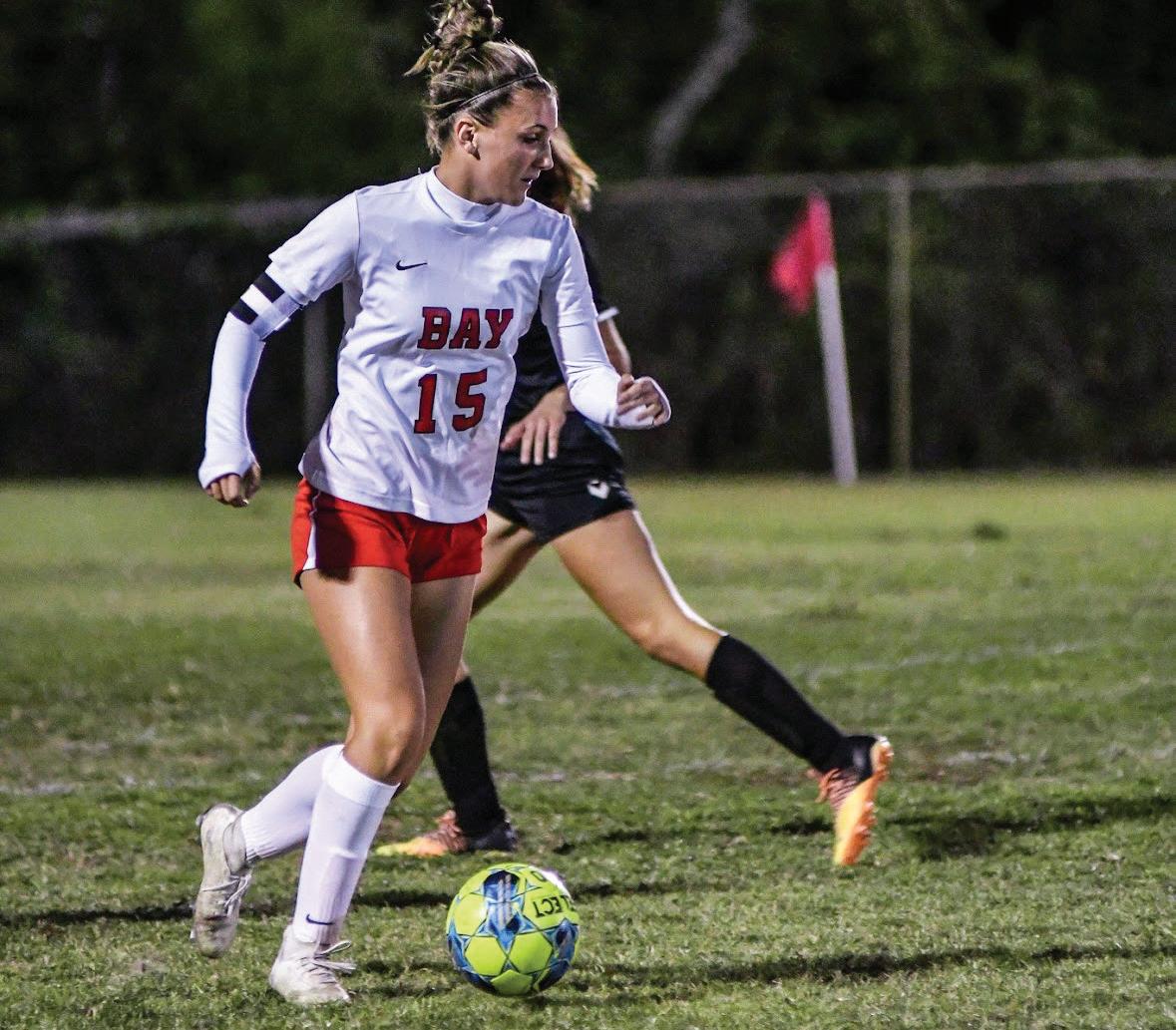
Kellon Lindsey started playing T-ball at 4 and grew up playing football and baseball with his brothers in Wauchula. Around ninth grade, he realized baseball could be a viable path to college.
“You would think in football, running a touchdown or throwing a touchdown pass is the most exciting thing,” he says. “But for me, being in the box, bases loaded and you need to score a run—it’s a little more exciting. That’s kind of why I wanted to stick to it.”
Like Emily, Kellon attended camps to catch the eye of highlevel coaches, and he immediately stood out. A couple of years ago, the Hardee Senior High School shortstop started receiving serious attention from programs such as his dream school, the University of Florida.
“Nowadays, you have to play summer ball to get your name out there,” Kellon says. “I started in ninth grade with a team in Orlando, and you basically didn’t have a vacation all summer. You were playing baseball the whole time. And I would say the camps were pretty big. I went to a lot of different team camps in Florida, and that’s what separated me sometimes. There are just some things, like my speed, that people have to see in person. That stuff’s big for the coaches to see.”
Since committing to the Gators in November, Kellon has had to redouble his efforts in the weight room and put even more work into his swing and fielding, knowing he’ll soon be facing off against some of the best players in the country. Toward the end of 2023, Kellon even started to get attention from pro scouts, adding to the whirlwind of attention and distractions for him and his Hardee teammates.
“The high school team has been so important to me—the coaches and players,” he says. “All this stuff is new to them as well. There are so many teams trying to reach out to me, and the head coach, Steve Rewis, has directed a lot of their calls and texts. It might seem like a little thing, but for me to be able to focus

on my game and go out there and enjoy it with them has been helpful.”
Social media has become an important tool for getting noticed for athletes who don’t already have coaches banging down the door to talk to them. That’s especially true for someone like Emily, who lives in a small town not known for soccer.
“Being in Panama City, you have two club teams that are rivals, and that’s it,” she says. “You don’t have Elite Clubs National League or MLS Next teams where they get a lot of exposure. It’s not like Orlando, Jacksonville or Tampa where you have coaches swarming them. It kind of puts a restriction on you because soccer isn’t big here.”
To overcome that, Emily uses YouTube, X and Instagram to post highlight reels and training videos to give coaches a clearer picture of her as a player. For a program she’s especially interested in, she’ll include videos and a brief rundown of her profile to stand out from the pack.
“A lot of coaches I’ve talked to say, ‘We’d like to see how you play the game, but we also want to see how you train,” Emily says. “They say you can teach somebody to be better, but you can never teach somebody to work hard. So, through those social media platforms, I show coaches that I can work hard, I’m willing to learn and can change for their team.”
As difficult as that has been, it’s starting to pay off. Emily has already received offers from several Division III schools, some in Division II and a couple of Division I programs. And her club coach has no doubt that more are on the way.
“I think she’ll have multiple Division I offers,” Mike says. “And if she gets one of those opportunities and she gets a scholarship, watch out. Because she’s the type of player to really drive that nail in.” n

1. Know your skill level—find camps, clinics and clubs— and NCAA or NAIA eligibility requirements available on their websites.
2. Compile an athletic resume including:
• Skills video.
• Athletic stats.
• Academic transcripts, ACT/SAT scores.
• Extracurricular activities.
3. Start emailing coaches.
• Include your athletic resume—especially your skills video.
• Subject line: name, position, current grade level and key stat. For Example: “Jane Doe, High School Sophomore, Pitcher, 90 mph fastball.”
• Individually craft each email, clearly stating why you’re interested in that program.
4. Make campus visits and line up meetings with coaches. Keep sending updated stats.
5. Lock down your offer and negotiate your amount. If a program can’t budget for a huge athletic scholarship, don’t discount merit-based, academic or other types.









Caramelized Onion Dip
3 tablespoons extra-virgin olive oil
3 yellow onions, sliced
8 ounces cream cheese, room temperature
1 cup sour cream

½ cup mayonnaise
1 teaspoon Worcestershire sauce
1 teaspoon kosher salt
Chives for garnish
Place oil in a Dutch oven or large pot over medium heat. Add onions. Cook, stirring occasionally until onions are soft and translucent, about seven minutes. Reduce the heat to medium-low. Continue cooking, stirring occasionally, until the translucent onions become brown, 10 to 15 minutes. Onions should be soft, semi-translucent and brown. They should not be crispy or have dark brown spots from contact with the pan.
With a mixer, beat together cream cheese, sour cream and mayonnaise on medium-high until smooth. Add Worcestershire sauce and salt. Stir to combine.

Add caramelized onion and incorporate with a spatula until evenly distributed. Chill for at least an hour. Garnish with chives.

Million-Dollar Dip
4 thick-cut bacon slices, chopped
7½-ounce package chiveand-onion cream cheese, room temperature
1 cup mayonnaise
8 ounces extra-sharp cheddar cheese, shredded
¼ cup thinly sliced scallions
Heat a large nonstick skillet over medium heat. Add bacon. Cook, stirring occasionally, until browned and crisp, about eight minutes. Remove from heat. Using a slotted spoon, transfer bacon to a paper towel-lined plate. Stir together cream cheese and mayonnaise in a medium bowl until fully combined. Fold in bacon, cheddar cheese and scallions. Serve immediately, or cover and refrigerate for up to three days.
12 ounces fresh lump crabmeat, drained and picked clean of shells
½ cup sour cream
½ cup mayonnaise
1 tablespoon chopped fresh flat-leaf parsley
1 tablespoon Old Bay seasoning
1⁄3 cup chopped scallions
2 tablespoons fresh lemon juice
Chives, for garnish
Stir together first seven ingredients. Top with fresh chives. Chill for at least an hour before serving.
Cowboy Caviar Dip
2 cans black-eyed peas
1 can black beans
1 can corn
1 bell pepper red or green, finely diced
¼ cup red onion, finely diced
Vinaigrette
¼ cup olive oil
2 tablespoons apple cider vinegar
2 tablespoons lime juice, freshly squeezed
2 tablespoons honey
2 to 4 jalapenos, seeded and finely diced
¼ cup cilantro, finely chopped
1 ounce ranch seasoning
16 ounces sour cream
14½-ounce can petite diced tomatoes, drained
15.25-ounce can whole kernel corn, drained
½ teaspoon cumin
¼ teaspoon paprika
¼ teaspoon garlic powder
Salt and pepper, to taste
Rinse and thoroughly drain the black-eyed peas and black beans. In a large bowl, mix together the black-eyed peas, black beans, corn, bell pepper, red onion and jalapenos. Add the vinaigrette ingredients to a high-speed blender or food processor. Blend for five to 10 seconds or until emulsified. Pour the vinaigrette over the bean salad. Toss until well coated. Refrigerate for at least 30 minutes or overnight.
Just before serving, add chopped cilantro. Toss to combine.
4.25-ounce can diced green chilies, drained
10-ounce can original Rotel
¾ cup shredded cheddar cheese
Mix all ingredients together. Chill for one hour before serving.
6 ounces plain Greek yogurt
4 ounces cream cheese, softened
¼ cup chopped cucumber
1 cup fresh cilantro leaves
2 to 3 stalks green onion
1 clove garlic
¼ teaspoon salt
Combine all ingredients in a food processor. Blend.
1½ cups sour cream
½ cup plain Greek yogurt
1 teaspoon garlic powder
1 teaspoon onion powder
¼ teaspoon dried dill
2 tablespoons fresh chopped parsley
½ teaspoon sea salt
2 tablespoons fresh chopped green onion, plus extra to taste
¼ cup finely grated carrot
¼ cup chopped broccoli florets, no stems
Combine all ingredients. Mix. Adjust seasoning to taste as needed.
Refrigerate overnight to allow the flavors to blend.
1 cup Greek yogurt
1 cup sour cream
1 large jalapeno
¼ of an English cucumber
2 tablespoons minced fresh dill or 1 to 2 teaspoons dried dill
1 tablespoon chopped green onion
½ tablespoon dried parsley
1 teaspoon onion powder
1 teaspoon garlic powder
1 teaspoon salt
Combine Greek yogurt and sour cream in a medium bowl. Remove the jalapeno’s stem, then mince the jalapeno. Add to the bowl. Include all of the seeds for a spicy dip, half for a lightly zesty dip and no seeds for a mild dip.
Coarsely grate the English cucumber using a cheese grater. Wring out excess moisture in a paper towel, then mince with a knife. Add to the bowl.
Stir in dill, green onion, parsley, onion powder, garlic powder and salt.
Cover bowl with plastic wrap. Refrigerate for at least one hour.

By Dave LaBelle
Recently, I challenged myself to see and photograph light as I found it entering our home, without any help or interference.
Determining not to move anything for better composition, I watched as morning and afternoon light crawled across tables, chairs, curtains and floors, illuminating things hidden in shadow: dusty furniture, hanging towels, baskets of fruit, our dog, even discarded toilet paper rolls on a window sill in the bathroom.
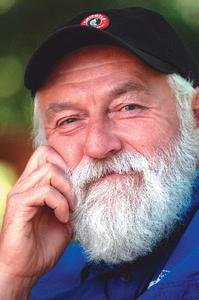
The temptation to move a towel, a napkin or a banana to create a better composition or add artificial fill light was great, but I resisted in the name of capturing only what I saw naturally.
Photographing the light and those things it touched was an exercise I faithfully maintained for 10 days, posting a picture every day on Facebook.
In the end, this modest exercise accomplished more than anticipated.
To begin, it slowed me down. I noticed a world I had ignored and saw details I had seldom paid attention to before, such as the carvings on a wooden sculpture, a nook for a phone, the glass doorknobs on my bedroom doors.
It helped me truly see light in a new light, as I watched color and intensity quickly change, and deep shadows
open and close again. Though I have always adored light from the time I opened my eyes, a new heightened awareness of its magical healing power and beauty washed over me.
More than once I breathed deeply and brushed away grateful tears. I was reminded that where there are shadows, there is light.
Lastly, the exercise offered me something to look forward to each morning, photography not assigned or driven by a deadline, something visually stimulating and soothing, like soft classical music.
What pleased me most was the response to the uncomplicated images after posting them online. Many friends and photographers whose work I greatly admire were encouraged to capture their own found images of light.
Slow down and capture the beauty of natural light as it enters your home. Follow and study the light as it moves, illuminating and exposing. Watch how the morning light crawls through your house as you open your drapes and find things you often don’t notice. See if you can capture an image that celebrates the beautiful light.
Email your best image (just one, please) with caption information, including an explanation of how it affects you, to GPH@pur.coop. We may share submissions on our website and social media channels.


Over the years, you’ve spent a lot of time sitting. Isn’t it time you enjoyed it?
The Perfect Sleep Chair® from Journey Health & Lifestyle® isn’t just a piece of furniture, it’s the ultimate personal comfort machine.
If your home is your castle, your favorite chair is your throne. If you are like me, it’s where you spend a great deal of your time… watching TV, eating a snack, carrying on conversations and, yes… sleeping. No one has taken the time or effort to design and
manufacture a reclining chair with people like us in mind… until now. From the quality construction and the comfortable fabrics to the top-of-the-line features and finishing touches… this chair has it all. Simply put, it will change your life.
To find out how you can get a one of your very own, call 888-852-5248 to speak with a specialist.




By Scott Flood

Unless you’ve just awakened from an especially long nap, you’ve probably been hearing plenty about artificial intelligence. It’s likely that much of what you’ve heard is exciting or terrifying. Movies and TV offer paradises in which technology frees us from daily drudgery—and frightening scenarios in which machines become our overlords.
Venkat Banunarayanan smiles when asked if popular media’s takes on AI are accurate.




“We’re at the stage of discovery with AI,” Venkat says.


What could AI, VR and AR mean for electric co-ops?

“There’s a lot more buzz than reality at this point, and we have a long way to go.”
As the vice president for Integrated Grid Business & Technology Strategies for the National Rural Electric Cooperative Association, Venkat spends some of his time exploring possible use cases with AI, augmented/virtual reality and other technologies, while considering how they might improve the way electric co-ops serve their consumer-members.

“Can AI do things better? Can it handle some of the tasks we have to do today? Can it make decisions for us? The answer to those and most other questions is the same: maybe,” he says.
Industry experts agree it’s impossible to guess where AI will be in another decade or two, but it’s currently not as powerful as the entertainment industry and media seem to think.
AI is being incorporated for specific tasks and activities, including automated solutions such as chatbots that are capable of answering common questions. AI also has the potential to be paired with data analysis, such as retailers using data to better predict customer needs.

Despite what you may have heard, AI is incapable of thinking independently. The functionality greatly depends on programming, how the tool is trained to handle specific tasks and the level of data being fed into the system. AI revolves around learning and adapting to decision-making.



Because these new technologies interface with internal and external systems, Venkat stresses the importance of strong cybersecurity.
“We need to make sure hackers can’t




influence systems,” he says. “When we consider advancements like AI, we need to ensure protection of personal, critical infrastructure, proprietary and confidential data, too.”


Maintaining robust cyber hygiene is important and necessary to deploy any technology reliably and safely—AI is no different.
As electric cooperatives explore the possibilities of AI, they will focus on underlying needs rather than the technology itself. Examining better ways to accomplish tasks and obtain desired results will guide co-ops as they consider AI tools for more efficient processes and approaches.
Despite all the hype, today’s AI is mostly used to make incremental improvements to existing products and services. That’s how electric co-ops are likely to experience the growth of AI in the foreseeable future.

For example, the next generation of smart meters might incorporate AI tools that help homeowners better manage energy use. AI-based systems may also be used to improve management of the nation’s power grid, spotting potential problems before human operators can.
Electric cooperatives already use artificial intelligence and augmented reality for key tasks and activities.


Looking ahead, co-ops see great potential for AI and AR as helpful tools for improving grid reliability and the services they provide to consumer-members.
AI tools like chatbots can enhance member interactions and provide a tailored experience based on energy use data.
With the help of AI, weather forecasts will become more accurate, pinpointing areas to station utility crews.

Weather forecasts are likely to become more accurate, pinpointing the areas most likely to experience damage so crews can be stationed there.
Another promising technology being explored is augmented reality, and some co-ops are already testing it, particularly in educational and training opportunities.


For example, apprentice lineworkers can become comfortable with the equipment by working with the AR and VR versions before working with the real thing. Instead of watching a video or a webinar, lineworkers can interact with what they’re doing. Safety training can simulate a hazardous situation, like the aftermath of an ice storm or hurricane, providing lineworkers the opportunity to prepare for the real thing.
AR blends VR with the world around us.
One day soon, a lineworker may look up at a failed transformer

Through augmented reality, lineworkers can experience interactive, lifelike trainings, rather than watching a video or webinar.


atop a power pole. Their safety glasses will instantly recognize the type of transformer, its exact location and when it was installed before displaying a checklist of the equipment the lineworker may need, a guide to diagnosing common problems and 24-hour access to technical experts.
Ultimately, the adoption of AI, VR, AR and other technologies share one goal for electric co-ops. From solving outages more quickly to allowing consumer-members greater control over their energy use to lowering the cost of service, tomorrow’s innovative technologies will continue to help co-ops enhance the services they provide to communities.










All ages can find something new and exciting around every corner of the state. Filled with rich history, abundant natural beauty and diverse events all year, Florida has something fun for everyone.
August 1
Open Studio Painting
Come in and choose an art project from 11 a.m. to 4 p.m. Tuesday through Friday. Projects include acrylic paint, canvas and wood, mosaic and resin. The $40 to $60 fee includes instruction, two hours of studio time and materials.
www.sunbeargalleryandstudio.com; 850-588-6861
August 1-7
Walk the Wildstein
Beat the heat and explore the art of movement and wellness as you stroll through the captivating ambiance of Alan Jay Wildstein Center for Performing Arts starting at 11 a.m. Monday through Wednesday. Don’t miss the opportunity to escape the summer heat and embrace the art of fitness in a setting where creativity and physical activity intertwine. www.sfscarts.org/shows; 863-784-7178

August 1-11
Summer Palette
Get swept away by a wave of vibrant hues and playful compositions that capture the essence of summer at this art show collaboration. The show features the work of local artists from Jessica Anne Art Gallery. www.facebook.com/flkeyshistorydiscovery; 305-922-2237
August 2-4
Boat Rally
Designed as a recreational, nautical and sporting activity for the whole family, up to 100 boats of various sizes and models are expected to meet and safely navigate round trip from/to Miami through staged stops in Key Largo and Islamorada, then on to Marathon for more on-the-water fun and events at Faro Blanco Resort and Yacht Club. Based on the rally schedule, each boat earns points for timing and activity participation. An awards ceremony with prizes and raffle drawings caps off the fun. www.miamiboatrally.com/florida-keys-rendesvouz; 305-204-1819



August 4
Fee-Free Days
National parks are America’s best idea, with more than 400 parks open to everyone. The fee-free day provides an opportunity to visit Fort Pickens and Johnson Beach. The entrance fee waiver for this day does not cover amenity or user fees for activities such as camping, boat launches, transportation or special tours. www.nps.gov/guis/index.htm; 850-934-2600






August 8-11
Key West Lobsterfest


Seafood lovers can chow down on Florida’s clawless lobster during this tasty “feast-ival” with a savory schedule of events ranging from a traditional lobster boil to special dinners and a lively street fair. Saturday’s free street fair begins at noon with live music and more than 80 vendors selling fresh Florida lobster. https://keywestlobsterfest.com; 305-998-8599
August 7
Queen of Hearts and Live Music
Key Largo Moose Lodge hosts live music at 7 p.m. Wednesdays. Live music is by Tim Dressing Band, Jenny Newman, Billy Knight, John Possis and Bill Falvey. Genres include rock, jazz and country. Come listen and dance. Key Largo Moose Lodge is at MM 98.5. Admission is free. www.moose2287.org/index.php/calendar; 305-395-2966
August 7


Veterans Appreciation Day at Man in the Sea Museum
Join us the first Wednesday of every month for Veterans Appreciation Day as we celebrate the history of Bay County and the advances in military diving. All veterans and active-duty personnel receive free admission, their family members are admitted for $6 each. General public admission is $10 for adults; $6 for 5- to 16-year-olds; and free for those 4 years old and younger.
https://maninthesea.org; 850-235-4101
August 10
Circus of the Sea
Southernmost Beach Resort features a talented family of acrobats performing a pirate-themed acrobatic and aerial show. Enjoy aerial stunts, trampolines, funny skits, drinks, snacks, face-painting and more. Tickets include access at 6 p.m. to the pool party. The show starts at 7:30 p.m. https://www.southernmostbeachresort.com; 800-354-4455
August 15
Morada Way Art Walk

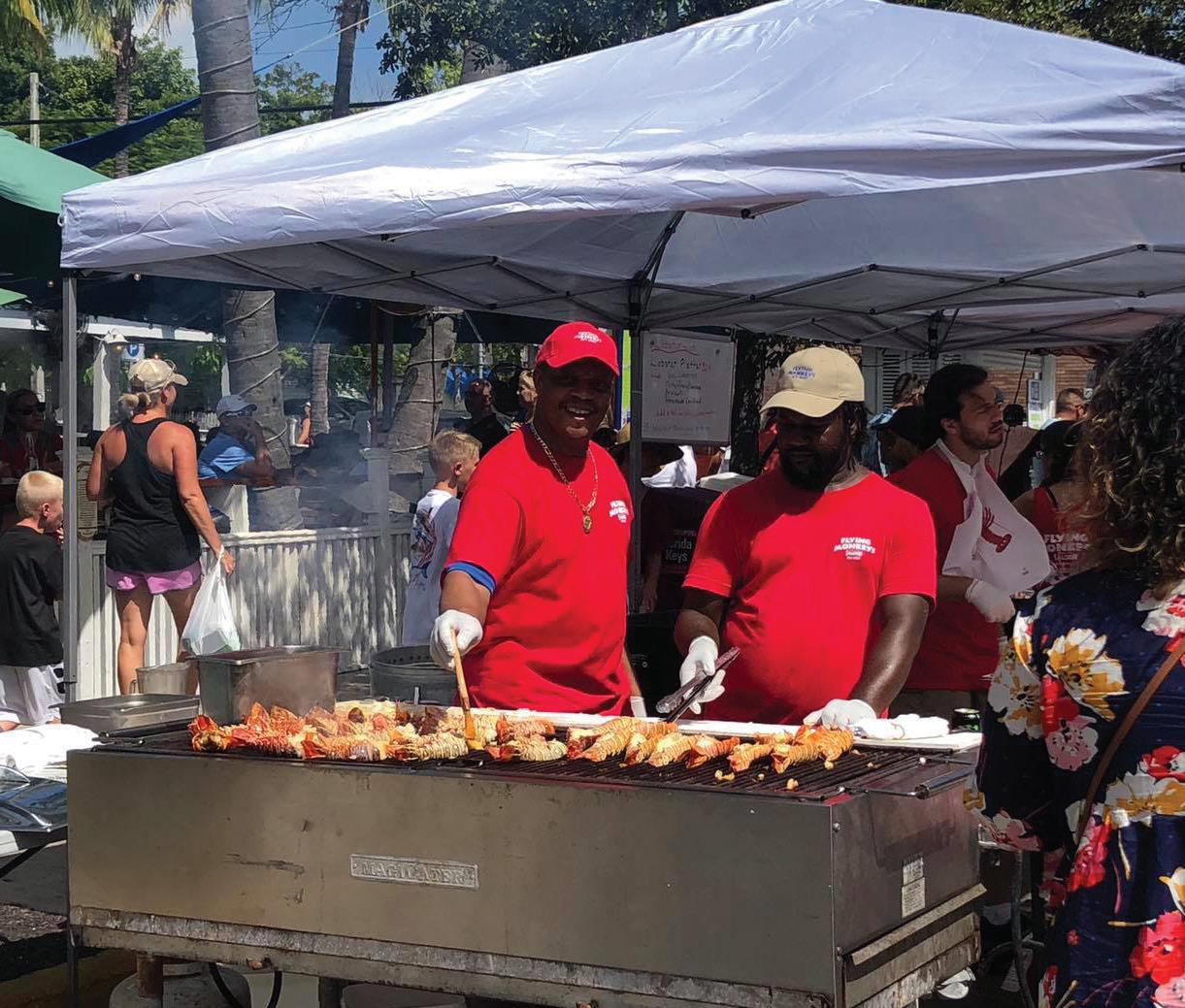


Keys-inspired fine artists, vendors, residents and visitors congregate on Morada Way to celebrate the arts and culture in the Florida Keys. Enjoy perusing art from 6 to 9 p.m. the third Thursday of each month. www.moradaway.org; 305-664-2471


August 16
Cinemas in the Sand
Santa Rosa Island Authority invites families and friends, young and old, to unpack their beach chairs and blankets, dig their toes in the sand, and spend a Friday evening cozied up on the beach while enjoying the family film “The Secret Life of Pets.” All movies are free and start at sunset in front of the Gulfside Pavilion stage. www.visitpensacolabeach.com/cinemas-in-the-sand; 850-530-3349
August 16
Candlelight: A Tribute to Taylor Swift
Discover the music of Taylor Swift at First United Methodist Church under the glow of candlelight as Palafox String Quartet performs 13 of Taylor Swift’s hits. Candlelight concerts bring the magic of a live, multisensory musical experience to awe-inspiring locations. bit.ly/45ScoZn; 402-249-2445
August 31
Summer Pop-Up Market


Visit the farmers market from 8 a.m. to 1:30 p.m. There is live music and many fan-favorite vendors, along with new ones featuring local produce, art, artisan foods, herbs, plants and jewelry. lakeplacidfarmersmarket.net; 863-440-7657


Want to share a family-friendly event with the readers of Florida Currents? Head online and enter the details at tinyurl.com/FloridaCurrents. Make sure to submit the item at least 60 days before the event (due to press deadline). If you own rights to a print-quality photo promoting your event, include it with photo credit information.




There is a right plant for every place.

Although we live in the Sunshine State, many gardeners strive to grow things in the shade.
Beautiful trees in the landscape provide respite from the heat, but their cooling shade also makes it hard for some plants and turfgrasses to grow. However, there is a right plant for every place.
Ground covers can be an important part of any landscape. A good ground cover provides the perfect backdrop for your other plants to shine. Ground covers help increase soil moisture while preventing weeds and soil erosion. Many ground covers are a good alternative to turfgrass, especially in shade where turf does not thrive.
In areas of your yard with consistent shade, you’re better off planting a ground cover that’s easy to grow in low-light conditions. Many of these ground covers won’t tolerate foot traffic, so you need to plan for walkways or paths.
Before deciding which ground cover to plant, you need to determine what type of shade you have.
Shade tolerant ground covers do well in:
• Fewer than four hours of full sun (preferably during the cooler hours of the day).
• Shifting shade from taller trees, such as pines.
• Partial, mottled shade all day long.
Most plants, no matter how shade tolerant, struggle in:
• Shade from canopies so dense you cannot see the sun from ground level.
• Shade created by the shadow of buildings or fences.
• Wet, dry or heavily rooted areas.
While this is by no means an exhaustive list, the following ground covers can be grown in partial to even dense shade, depending on the plant.
nodiflora)
Frog fruit’s purple flowers may be small, but they make quite the show when this native ground cover is planted en masse. Frog fruit
is a host plant for butterflies, and the blooms attract pollinators. It doesn’t require much maintenance, but it won’t tolerate long dry periods. Frog fruit thrives in zones six to 11, in partial shade to full sun.
elatior)
If you’re looking for something with more dimension for a shady spot, cast iron plant may be for you. This evergreen perennial has glossy green leaves that grow upright reaching 1 to 2 feet tall. There are multiple variegated cultivars to choose from as well. Cast iron plant is ideal for adding a little tropical flair to North Florida, as it’s also cold hardy. You can grow cast iron plant in zones 7 to 11 in areas that have filtered or deep shade.
Mondo Grass (Ophiopogon japonicus)
Mondo grass is an evergreen that is a member of the lily family. This grass has blade-like slender leaves that curve back toward the ground, giving this plant the appearance of turfgrass.
Leaves can be dark green or variegated depending on the variety. It won’t tolerate mowing, which is fine because it only grows to be 3 to 4 inches tall. Its carpeting habit makes it ideal for covering exposed tree roots or preventing erosion on hills. Mondo grass thrives in zones 7 to 11 in most shady areas.
While shady areas can be difficult to grow in, there are quite a few options out there—much more than listed here. Don’t let the shade get you down. After all, a problem spot in your garden is just an opportunity to try something new.

Natasha Atlas graduated from the University of Florida’s Agricultural Education and Communication Program in 2021. She loves writing about unique and new varieties of flowers and plants for the Neighborhood Gardener Newsletter and its 10,000 subscribers. When she isn’t writing, she enjoys tending her own garden on her balcony.
As you gear up for a new school year, remember to practice electrical safety in the classroom and at home. From powering electronic devices to spending time outdoors with friends, always play it safe around electricity.
Read the clues below to complete the crossword puzzle, then double check your answers in the key.
1. 1. Never insert anything other than this into an electrical outlet.
4. When outdoors, stay away from these big green boxes that lower electricity voltage.
1. Never play around these when you’re outside; you can get hurt!
2. Don’t yank on a when unplugging it. Instead, grab the base and pull from there.
3. Always make sure your hands are before plugging anything in.
In today’s digital age, utility scams are on the rise, targeting consumers of water, gas and electricity. Scammers are becoming more sophisticated, exploiting technology to deceive people through various means, such as phone calls, texts, emails and deceptive websites.
Here’s what you need to know to protect yourself:
Recent scams include imposters posing as utility representatives, demanding immediate payment to avoid service disconnection. They may also claim you’ve overpaid and offer a refund in exchange for personal information.
Spotting a scam involves watching for high-pressure tactics, unusual payment requests—such as gift cards or cryptocurrency—and signs of poor communication quality, such
as misspellings and incorrect grammar.
Do not make instant payments or share personal information over the phone or via email. Florida Keys Electric Cooperative provides secure payment options and never demands immediate payment or requests sensitive details via these channels.
If you’re unsure about a communication claiming to be from FKEC, hang up and call the office directly to verify.
To avoid scams, be cautious of unknown individuals requesting personal information, and report any suspicious activity.
By staying vigilant and communicating with us, you can help protect yourself and your community from fraud. n
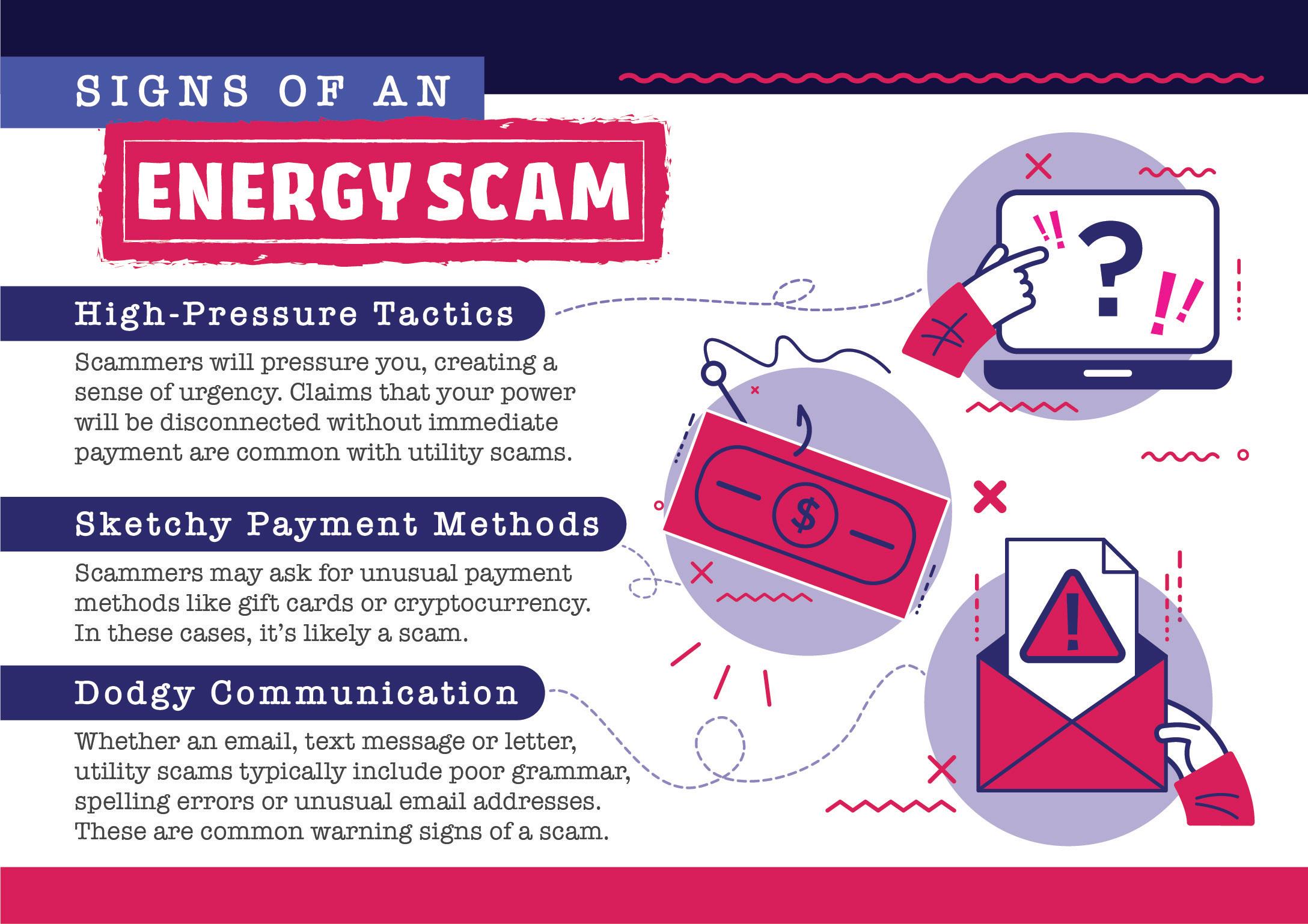

Odd but delicious fish make great additions to any outing
While running to the next fishing spot, the sharp-eyed captain spotted a mottled brown object lurking beneath a chunk of floating plywood. He circled back for a better view.
“Looks like someone’s home today,” quipped Dan Van Treese from Perfect Cast Charters of Port St. Joe as he shifted the outboard into neutral. “Don’t throw right on top of it. That might spook a big fish. Cast upwind of it and let the wind carry the cork toward the wood.”
When the cork drifted near the plywood, the angler jerked the rod. The cork splashed and gurgled underwater but never returned to the surface. Milliseconds later, the line began ripping from the screeching reel. After a spirited fight, the angler subdued the peculiar blackish fish.
The long dorsal and anal fins on these odd fish look like two extra tails. Also called blackfish, tripletail in Florida typically range from 2 to 10 pounds. The state record weighed 40.81 pounds, caught in 1998 by Thomas D. Lewis off Fort Pierce.
These unusual fish love warmer waters. In the winter, tripletail drop into the depths offshore, but they return to the surface in spring before dropping again in early fall.
Tripletail commonly float on their sides under buoys, crab trap markers, grass mats or surface debris. Spawning along the lower Atlantic and Gulf coasts peaks during July and August when tripletail gather in larger concentrations.
Few people intentionally target the illusive fish because nobody knows when or where they might show up. They could appear 100 miles offshore or far up a salty estuary such as Apalachicola Bay. People might see dozens one day and nothing for weeks. Many anglers watch for tripletail sunning themselves near the surface as they cruise past floating objects.
“Tripletail are very spread out,” Dan says. “When we’re out fishing or running, we always keep our eyes open to look for tripletail. Frequently, we’ll see them hanging right around the buoys. If we see one, we’ll go after it. It’s sight fishing, but we don’t want to get too close to them or they will disappear.”
Opportunistic feeders, tripletail eat almost anything, including small fish, crabs and shrimp. They will hit some artificial


temptations that resemble natural foods but prefer live shrimp, baitfish, crab or fish pieces.
After spotting one, ease up to it with great stealth. From upwind, let the breeze blow the boat silently into casting range. Only use an electric motor for occasional directional control.
“A popping cork with a circle hook or jighead tipped with a live shrimp or cut baitfish will work well for tripletail,” Dan says. “Letting the cork drift to the buoy is a good way to catch them.”
If tripletail disappear or do not bite, return to that location later. They probably didn’t go far. One might just drop down to the bottom for a while and then return to sun itself. These delicious fish make an excellent bonus to any saltwater fishing excursion.
For more information about Perfect Cast Charters, call 850-227-5149 or visit www.perfectcastcharters.com.

John N. Felsher is a freelance writer, broadcaster, photographer and editor. An avid sportsman, he’s written more than 3,500 articles for more than 170 different magazines on a wide variety of outdoor topics. He also hosts an outdoor tips show for WAVH-FM Talk 106.5 in Mobile, Alabama. Contact him at j.felsher@ hotmail.com or through Facebook.
Smart home technologies are transforming how we live, making our homes more comfortable, convenient and energy efficient.
Smart home technologies are devices that communicate with each other to automate everyday tasks and functions around the home, such as heating and cooling, lighting, and security. In addition to convenience, smart technologies enable consumers to manage and monitor their energy consumption through device scheduling and control.
With just a tap on your phone or a voice command to your virtual assistant (like Alexa or Siri), you can conveniently control many aspects of your home environment. If you’re new to the smart tech world, you can try several cost-effective devices as you explore ways to make your home smarter.
One of the best and most inexpensive places to start is with a smart bulb or plug. Smart LED bulbs allow you to control home lighting remotely through a smartphone app or voice commands. You
can set schedules to automatically turn lights off or on, which can help you save energy and boost home security.
Smart plugs are another inexpensive way to give electronics and small appliances the smart home treatment. Smart plugs allow you to set schedules and remotely control power for lamps, small appliances and electronics, minimizing standby energy consumption and maximizing convenience.
For example, you can sync the timing of your bedside lamp, alarm, speakers and coffee maker to turn on at the same time each morning.
If Alexa or Siri is already part of your household, you can build on your existing tech ecosystem by adding a smart hub, such as Amazon Echo or Apple HomePod. Voice assistants synced to smart devices such as bulbs and plugs provide additional options for device management and allow family members to interact with the various devices through voice control rather than individual apps.
Home heating and cooling account for a significant portion of energy use, so a smart thermostat is one of the best smart tech investments you can make.
While traditional programmable thermostats can be set to your schedule and preferences, a smart thermostat takes this one step further by learning and adjusting to your routine and building a schedule around it.
Smart security systems are popular with homeowners looking for advanced
security solutions incorporating cameras, sensors and cloud-based video recordings. As with other smart technologies, smart security systems provide convenient, flexible ways to monitor homes and businesses, giving you peace of mind even when you’re away.
If you’re considering smart tech for your home, start by defining your goals. Is saving energy your top priority, or are you aiming to improve home security?
Smart home technologies provide great
convenience—but remember, they are internet-connected devices. That means you need a stable Wi-Fi connection to ensure devices work properly and strong passwords for your router and individual devices.
Whether you’re looking to automate every aspect of your home or simply want to try a device or two, smart technologies have the power to transform your living space into a home where comfort and convenience reign supreme.

1. Define goals. Determine the areas in your home you want to make smart, such as lighting, security and entertainment systems.
2. Choose compatible devices. A smart hub can make integration easier with a central device to control multiple smart technologies.

3. Check Wi-Fi strength. Smart home technologies require a stable internet connection to function properly, so consider factors such as router placement and signal strength.
4. Prioritize security. Set strong, unique passwords for your Wi-Fi network, set devices to update automatically and limit personal data collection.
Beginning a new school year can be stressful for parents and teachers, but the students take on just as much. They may seem excited to see friends again, but we often forget how draining that first week can be.
Students switch from months of running around outside or playing games to sitting in a chair for hours while paying attention, learning new rules and having to socialize. The mental toll those hours take on students is then brought into the home. Because children and teens are drained after a full day of switching behaviors, a good way for them to spend time after school that first week is to just breathe. Their bodies have been through a boot camp of returning to routine, and the home is best used as their rejuvenation zone. This could simply mean not making big plans during the week or the first weekend. Instead, plan for time relaxing with a movie, ordering pizza or listening to their grievances of the week.
Let your home be their safe space to wind down and rejuvenate.






Where engineering excellence meets sleek design - a lightweight, safe, customizable, and stylish scooter for UNLIMITED FREEDOM. Numerous scooters with various features and capabilities are on the market, making it crucial to select the one that best suits your requirements.







At the age of 56, a back operation left me dependent on a cane, significantly impacting my daily life. Simple tasks like going to the store or meeting friends became challenging, and I even had to cancel a long-awaited anniversary trip to Italy. My husband purchased a scooter for me, but it was cumbersome and uncomfortable for everyday use, leaving me feeling more constrained than liberated. However, everything changed when I came across the ATTO SPORT. This remarkable scooter proved to be a game changer. Not only is it robust and reliable, but it also conveniently splits into two pieces, allowing me to effortlessly lift it into my car trunk on my own. I was even able to stow it in the overhead compartment on the plane, enabling us to finally take that trip to Italy! I am now independent once more, able to go wherever I please and do so with a striking sense of style. In fact, I now find that my husband struggles to keep up with me!




Independence and convenience: Easy to use and conveniently folds into a compact suitcase size for simple storage. It easily separates into two parts in seconds, with the heaviest piece weighing just 37 pounds, making it easier to lift into your car trunk.

Go anywhere: Conquer any terrain with puncture-proof, shock-absorbing tires and a 4-inch ground clearance. Equipped with electronic stability control for added safety on descents and turns, it is also flight-approved, ideal for air travel and cruise ships. With a driving range of up to 12.5 miles (25 miles with the XL battery), a top speed of 6.2 MPH, and a maximum weight capacity of 300 pounds, this durable scooter is designed for longevity.
Unmatched Stylish Design: You deserve a mobility solution that doesn't just get you from A to B but makes you feel great while doing so. ATTO stands out from the crowd with its stunning design. How did Anna start to enjoy life to the fullest?

Airline approved. Spacious legroom, comfortable seat

Folds in 3 seconds, rolls like a trolley suitcase ROAD TRIPS FLIGHTS
Splits into 2 lightweight parts for easy lifting

Top-Notch Engineering: Guaranteeing both comfort and durability, this scooter offers ample legroom and a big comfortable seat. The ATTO is super portable and lightweight, and still rides like a heavy-duty scooter.




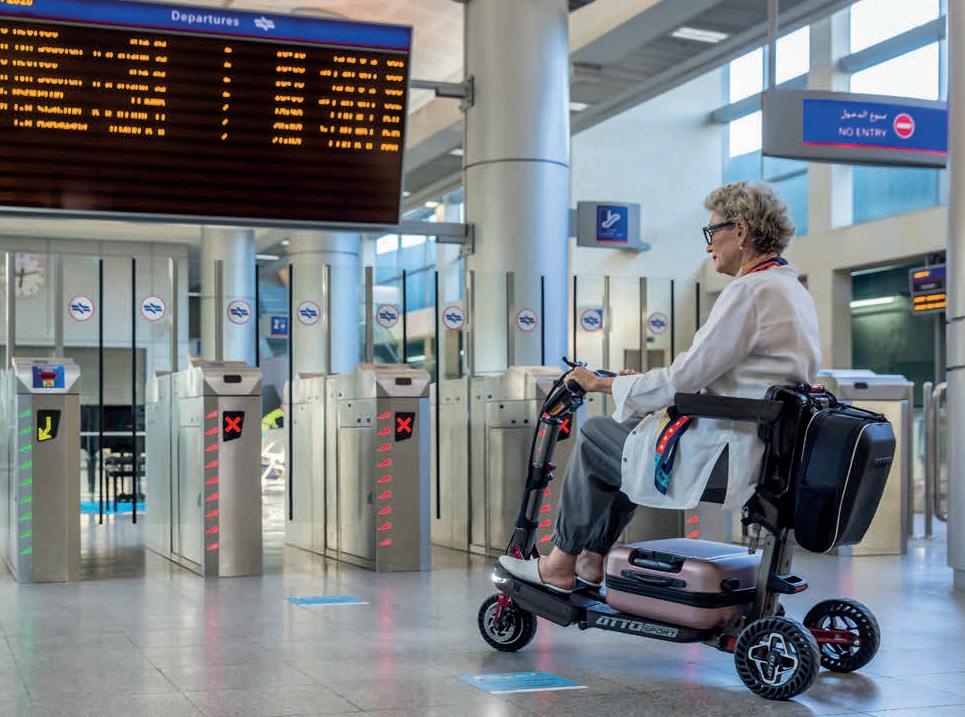
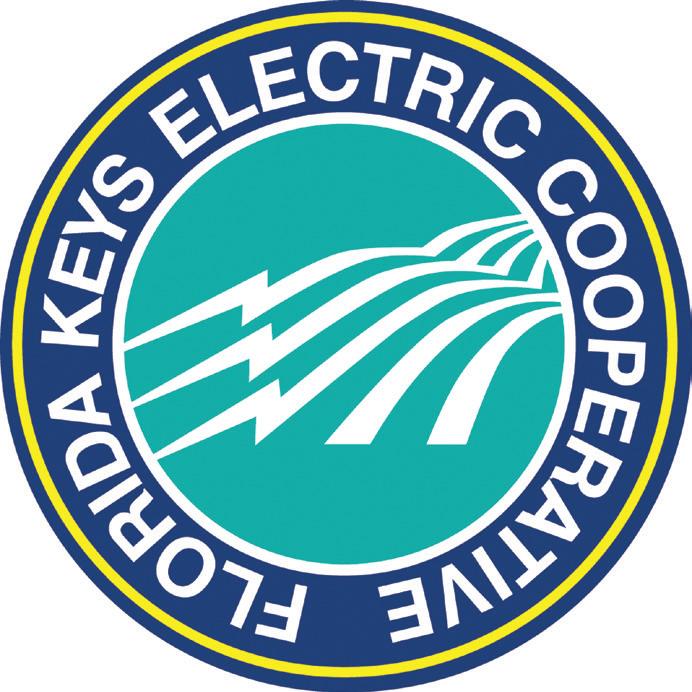


Don’t throw money out the window. Avoid these tips to save energy and money!
No one wants to spend more money on electricity, especially now when increased summer temperatures are resulting in higher electric bills. However, if you did want to, here are a few easy ways to go about it:
Keep hardly used, or never used refrigerators and freezers running all the time. Depending on their age and location, each appliance can use up to $20 A MONTH in extra energy. That’s a small price to pay to keep a couple of cold drinks conveniently located on your porch.
Have a contest with your friends to see how much dust your refrigerator and freezer coils can accumulate. Your appliances will be less efficient, and you’ll earn bragging rights with your friends and a higher electric bill.
Leave the lights in your home on day and night, and replace all energyefficient bulbs, such as CFLs and LEDs, with traditional incandescent light bulbs. Using these energy suckers, you can waste energy and money by just flipping a switch.
Make sure your home is poorly insulated and the doors and windows have torn weather stripping and cracked caulking. Poor insulation can increase your cooling costs by 5% to 25%. Plus, you won’t have to go outside to see what temperature it is.
Set the air conditioner thermostat to 68 degrees. You’ll be physically conditioned for winter and your wallet will be lighter.
Do not use a programmable or smart thermostat to more efficiently control your air conditioning. You’ll spend more to avoid using your cooling system wisely.
Don’t change your cooling system’s indoor filter. Your AC will work harder and less efficiently, most likely leading you to “contribute” a hearty sum to your AC repair person’s bonus.
Do a lot of cooking, baking, and other heat-producing activities like drying laundry during the hottest time of day. This is a great way to work up a sweat and increase your cooling costs.
Leave curtains and blinds open on sun-exposed windows during the heat of the day and remove any window tinting. The increase in heat exchange is a great way to burn through the money in your wallet.
Don’t make any home energy improvements or take advantage of FKEC’s Residential Rebates. Do not read about how you can earn up to $500 in home improvement rebates on page 6.
Learn more ways to decrease your energy consumption and reduce your electric bill at www.FKEC.com/resources or call 305-852-2431.